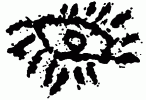| |
ARCHAEOLOGICAL SURVEY OF ISRAEL
HAR KARKOM MAP
FOREWORD
The survey map of Har Karkom (HK) is the first of two maps, together with that of Beer Karkom (BK), which are under study since 1980 [1].
The interest of the present writer for the mountain which today has the name of Karkom, goes back to 1954. As a student he was carrying on a survey of rock art and came across a major concentration of rock art on a mountain in the southern Negev desert of Israel. The site was called Jebel Ideid, according to Bedouin guides, in Arabic the name may mean "Mountain of Celebration" or "Mountain of the Multitude". This mountain, fenced by precipices, is a high plateau of ca. Km 4x2 with two prominent hills at the centre. A focal characteristic is the flint gravel, or hammada, that covers vast surfaces of the site.
Around the mountain there are valleys crossed by wadis. The plateau and the valleys look like two separate worlds. The archaeological finds in each are different as well. The Palaeolithic sites are mainly concentrated on the plateau. In the BAC period (Bronze Age Complex, includes Chalcolithic, Early Bronze age and Middle Bronze age I) the plateau has a concentration of altars, pillars and other cult sites. The valleys have numerous remains of stone built basements of huts and of entire villages (likely to have inspired the Arabic name).
In 1980, as head of the Italian Archaeological Expedition to Israel, we came back to this mountain to start an archaeological survey in a cooperation project between the Centro Camuno di Studi Preistorici, the Israel Department of Antiquities and the Archaeological Survey of Israel, supported by the Italian Ministry of Foreign Affairs.
|



